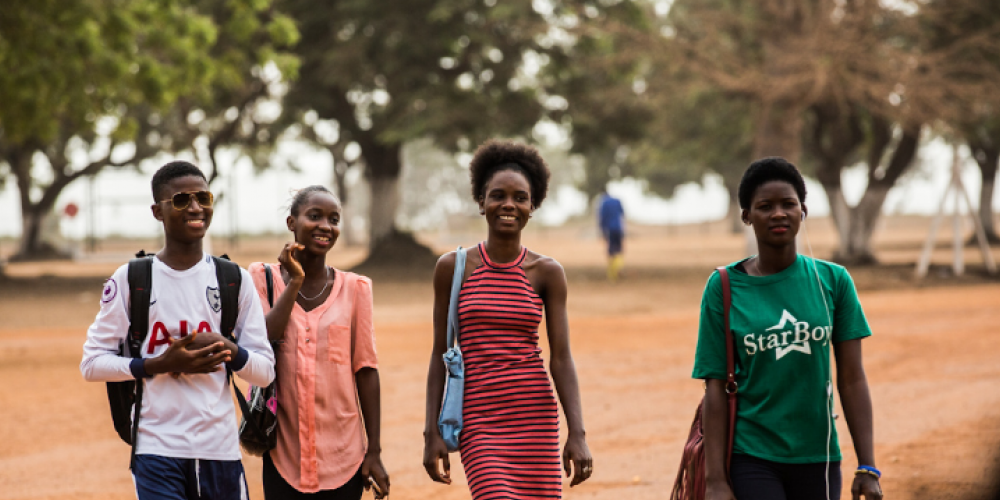The youth employment community needs new tools to develop new solutions.
Authors: Danielle Robinson and Sunamika Singh
Original post: blogs.worldbank.org/jobs
Practitioners across the globe are intent on identifying effective, sustainable and scalable ways to increase youth employment based on solid evidence of what’s working—and what’s not. A 2018 stocktake conducted by the World Bank’s Jobs Group showed that less than one-third of traditional supply-side youth employment programs have had a positive impact, while traditional demand-side interventions are not designed to focus on youth employment.
The youth employment community needs new tools to develop new solutions.
Tools for practioners
Throughout 2019, Solutions for Youth Employment (S4YE) consulted with our extensive community of civil society, private sector, donor, and youth partners to identify, curate and learn from ongoing youth employment innovations.
Two takeaways emerged from our conversations with youth employment practitioners. One, they need easy access to practical tools and resources on youth employment. And two, information on active youth employment projects run by the Bank and its partners needs to be centrally located.
To meet this demand, in October 2019 S4YE launched two new digital resources for practitioners: the S4YE Knowledge Repository and the S4YE Project Portal. These tools provide a convenient, easily navigable platform for practitioners to learn about new, innovative youth employment projects, identify potential partners for collaboration, and access helpful resources to implement effective youth employment projects.
A trove of resources, tools and guidance
S4YE’s Knowledge Repository is a global inventory of more than 200 practical toolkits, guidance notes, and other resources that were developed by a wide range of organizations including Accenture, International Youth Foundation, Youth Business International and others. It allows users to filter resources by eight different categories, such as training & skills development and private sector engagement.
Helpful tools in the repository include the Global Impact Sourcing Coalition’s Reducing Poverty through Employment Toolkit, which identifies a range of good practices, case examples, and resources to guide companies on how to employ, empower, and improve the advancement prospects of those living in poverty.
Several tools available through the S4YE Knowledge Repository— such as USAID’s Gender and ICT Toolkit, the ITU’s Digital Skills Toolkit, and the Mastercard Foundation’s Digital Commerce and Youth Employment in Africa report—can also help teams throughout the design process.
The repository also lists the World Bank Jobs Group’s Jobs M&E Toolkit, which is designed to help teams working with government counterparts by providing simple tools for collecting jobs-relevant data. On the demand-side, the World Bank’s report, Partnership for Growth: Linking Large Firms and Agro-Processing SMEs, presents lessons learned from various models used in public and private sector programs to stimulate the growth of agro-processing SMEs.
Whether working with youth or with firms, the Knowledge Repository makes it easier for practitioners to find helpful tools during the project design, implementation, and evaluation stages.
Finding ideas and inspiration
The S4YE Project Portal creates an accessible space for existing projects to identify others working in similar regions and sectors, and learn how they are incorporating new and innovative design features into their programs.
The portal provides information on more than 150 youth employment activities being supported by the World Bank and across almost 70 countries. The Project Portal also lists all 44 projects within the Impact Portfolio, S4YE’s external community of practice of innovative youth employment projects being implemented by Save the Children, Digital Divide Data, Educate!, Laboratoria, Microsoft, Samasource, Technoserve, and other international NGOs.
Projects are displayed in Map View and List View, and users can search for projects by six different categories including region, special target groups, and project features.
For example, the Project Portal lists more than 50 activities that are working to connect youth with digital jobs. Teams designing new digital jobs projects or modifying existing ones can use the portal to easily identify similar projects to learn from.
As a global partnership dedicated to increasing the number of young people engaged in productive work, S4YE believes that youth unemployment is a challenge too large for a single organization to solve. We hope that the Knowledge Repository and Project Portal will encourage practitioners to learn from and work with each other. Together, we can scale impactful solutions for youth employment.
The S4YE Knowledge Repository and S4YE Project Portal are meant to be ‘dynamic’ platforms that will be regularly updated. Please send us practical tools and resources to add to the Knowledge Repository. We will also regularly update information about the projects within our network. For more information, please contact Danielle Robinson (drobinson3@worldbank.org) and Sunamika Singh (ssingh30@worldbank.org).
S4YE is a multi-stakeholder coalition that aims to provide leadership and resources for catalytic action to increase the number of young people engaged in productive work. S4YE’s members include the World Bank Group, Accenture, The Rockefeller Foundation, Mastercard Foundation, Microsoft, Plan International, International Youth Foundation (IYF), Youth Business International (YBI), RAND Corporation, the International Labour Organization (ILO), the Governments of Norway and Germany, and the UN Envoy for Youth. The S4YE Secretariat is housed in the Jobs Group within the Social Protection and Jobs Global Practice at the World Bank Group.




